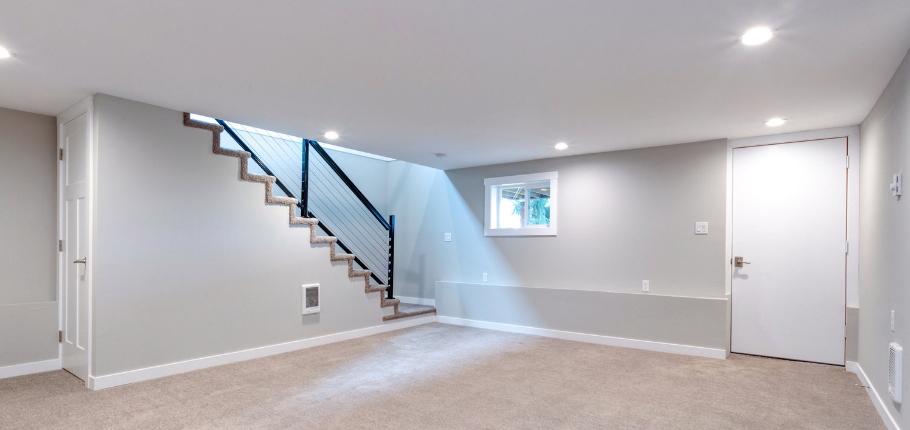
Applications of Drywall: Versatile Uses in Construction and Design
Drywall, a staple material in construction, is known for its versatility, affordability, and ease of installation. Initially used as a simple wall covering, it has evolved into an essential element for various applications, both functional and decorative. In this blog, we will explore the diverse uses of drywall across different industries and projects, demonstrating why it is one of the most popular materials in construction today.
Wall and Ceiling Construction
The primary and most common use of drywall is in the construction of walls and ceilings. It’s a fast and cost-effective alternative to plaster, providing smooth, durable surfaces that are easy to finish. Drywall panels are typically installed in frames of wooden or metal studs and are finished with joint compounds to create seamless walls and ceilings.
Example: In a residential setting, drywall is commonly used to create partitions in living rooms, bedrooms, and bathrooms. Commercial spaces like offices, hotels, and retail stores also rely on drywall for creating efficient, cost-effective walls and ceilings.
Soundproofing and Acoustic Applications
Drywall’s soundproofing properties make it an excellent choice for rooms that require noise reduction. Acoustic drywall, in particular, is designed to reduce sound transmission, making it ideal for spaces like recording studios, conference rooms, theaters, and multi-family residences. The addition of soundproofing materials like fiberglass or special acoustic coatings can further enhance its noise-blocking capabilities.
Example: In apartment buildings, drywall is often used in walls and ceilings to prevent sound from traveling between units. In offices or theaters, acoustic drywall ensures a quieter, more focused environment.
Fireproofing
Fire-resistant drywall, also known as Type X drywall, is specially designed to resist the spread of flames. It is made with additives like glass fibers and is commonly used in fire-rated walls, ceilings, and partitions in both commercial and residential buildings. It helps slow the spread of fire, giving occupants more time to evacuate safely.
Example: Fire-resistant drywall is commonly used in kitchens, garages, or industrial spaces where fire safety is a priority. It’s also essential in creating fire-rated walls between apartments or office units.
Moisture and Mold Resistance
Certain types of drywall, such as moisture-resistant or green board drywall, are designed to withstand high humidity areas like bathrooms, kitchens, and basements. These moisture-resistant varieties are specially treated to prevent mold and mildew growth, ensuring a longer-lasting and healthier living environment.
Example: In bathrooms and kitchens, moisture-resistant drywall is installed to reduce the risk of water damage. It is also used in basements and laundry rooms, where humidity levels are higher.
Drywall in Commercial Spaces
In commercial construction, drywall is frequently used to create partitions, false ceilings, and decorative features. Its ability to be molded, textured, and painted makes it a favorite material for modern office buildings, retail stores, and hospitality spaces. Drywall can be used to separate large open areas, create meeting rooms, or add a touch of design to otherwise plain spaces.
Example: In offices and hotels, drywall is used to create flexible room layouts, such as cubicles, meeting rooms, and lobbies. In retail stores, drywall can be used for attractive displays or partitioning different sections of the store.
Architectural and Decorative Features
Drywall is not only functional but also offers the flexibility for creative design. From intricate moldings and archways to custom-built furniture pieces, drywall can be shaped, textured, and painted to create visually stunning features in any space. This makes drywall a great choice for high-end interior design, where both aesthetics and functionality are essential.
Example: In luxury homes and commercial spaces, drywall is often used to create custom features like archways, crown moldings, and unique ceiling designs. Drywall can also be sculpted to create decorative furniture or partitions that blend seamlessly with the overall aesthetic.
Sustainable Building with Drywall
Sustainability is becoming an essential focus in construction, and drywall plays a role in creating green buildings. Many drywall manufacturers now offer eco-friendly options made from recycled materials or low-emission substances. Additionally, drywall’s energy-efficient properties contribute to the overall sustainability of buildings by providing insulation and reducing energy consumption.
Example: Green buildings and LEED-certified projects often use drywall made from recycled materials to reduce waste and energy consumption. Drywall’s insulating properties also help improve a building’s energy efficiency.
Conclusion
Drywall’s broad range of applications in construction makes it an indispensable material in both residential and commercial projects. From providing structural support and soundproofing to enabling creative design and sustainable building practices, drywall is a versatile choice that adapts to the needs of any project. Whether you’re working on a home renovation, an office building, or a commercial space, drywall offers a cost-effective and efficient solution for a wide variety of construction and design challenges.
Call to Action
Ready to explore how drywall can benefit your next construction or design project? Contact us today for more information on drywall options, installation tips, and expert advice. Whether you’re looking for soundproofing, fire-resistant solutions, or unique design features, we have the right drywall products to meet your needs!